We often write about moving to Italy, but many Italians (as you know) dream to live in the United States. Daisy, born in Miami, moved to Florence after finishing her university studies. Federico, born in Florence, loves to travel and is (what he calls himself) “an America lover”. Learn how this couple met, married in Florence, and then why they decided to move with their four children back to Miami.
Yes, like many of our past Chats, today’s story is a love story! Yet, it is also a story of faith. It is faith that allowed an exhibition, that involved the complicated process of shipping masterpieces of the Italian Renaissance to the U.S., to be organized in record time.
It’s important to note to our Italian readers (or expat readers) that the Old Master art that you may see every day in Italy, is rarely shown here in South Florida where museums and art galleries primarily exhibit contemporary art.
If you visit during Miami Art Week (Art Basel Miami Beach), we hope you have a chance to visit the “Faith, Beauty, and Devotion” exhibition. Enjoy this month’s Chat with Federico and Daisy”!
(1:08) Federico, where are you from?
I’m from Florence, Italy. I was born and raised there, and completed all my studies in Italy. After studying art history, I opened my art gallery in 2008 on Via Maggio in Florence. I moved to Miami in 2020 with Daisy and the kids.
(1:33) And you, Daisy?
I’m from Miami, and was here until I went to college in Boston. From Boston, my studies took me to Italy. I studied and worked there until I met Federico. Our four children were all born in Florence.
(2:00) How did you meet?
Federico: I remember the day. It was 18 years ago, in 2005. It was a night in June,
and in Florence. As you know summer nights in Florence are wonderful, because even if it’s a bit warmer in the day, at night it gets a little bit colder. And there is this amazing smell of all these flowers that blossom in Florence. That day I was invited by my cousin to have dinner just with the men in the family — so me, my cousin, my brother. I was not supposed to go or wanted to because I was watching a game. But after opening the window, that amazing smell came through. I decided to take my moped and go all the way to my cousin’s house to breathe the air, and as soon as I got there, I saw Daisy. You never know that a day could be the most important day of your life.
(3:20) Did you get married in Italy?
Daisy: We were married in the Basilica di San Miniato overlooking Florence, and it was just a special place for us. We went there, we went to our marriage classes there, and we followed our faith. We were married in Florence, and half of Miami seems to have gone to attend, what is now 15 years ago.
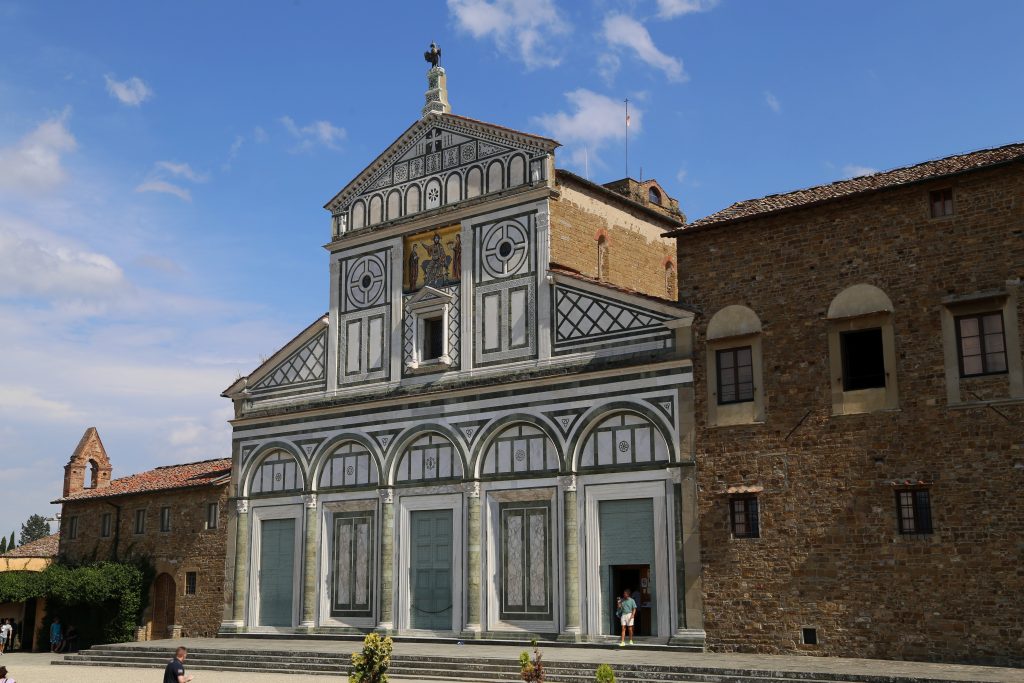
(4:00) Besides Federico, what about Italy stole your heart?
Daisy: Gosh, it was one of those things that people say when you’re sort of meant to be there. I don’t have any family members or heritage that’s Italian per se. My family is all South American, but when I went, I just felt a sense of belonging and I fell in love with Florence immediately. Everything — I just felt at home. My parents came here from Cuba, so they are exiled, and they always said, that you feel at home for a particular reason.
Just off the plane, as soon as I set foot in Florence, I saw the Duomo and the art, history, food. I can’t pick one particular thing. I even love the smell of the streets. Everything is what drew me there! Then when I met Federico, that sealed the deal! He was all that was missing.
Four children later, we still have our home there and we love it. – Right now, our home is in two places.
(5:20) So why did you move to Miami?
Federico: We came here during the pandemic. It was March 2020. So, Italy was just being hit by the pandemic. We didn’t know what to do. They said that it would last two weeks or even one month. So, we decided to go and slow the spread.
We moved right away and actually took the last flight from Europe to United States. The day after non-stop flights ended, so we flew out of Paris to the U.S.
We first stayed at Daisy’s parents. When two months became three, then four etc. the kids started school, and we all liked it here. And so, it was a smooth transition.
(6:30) Was the transition challenging for your children?
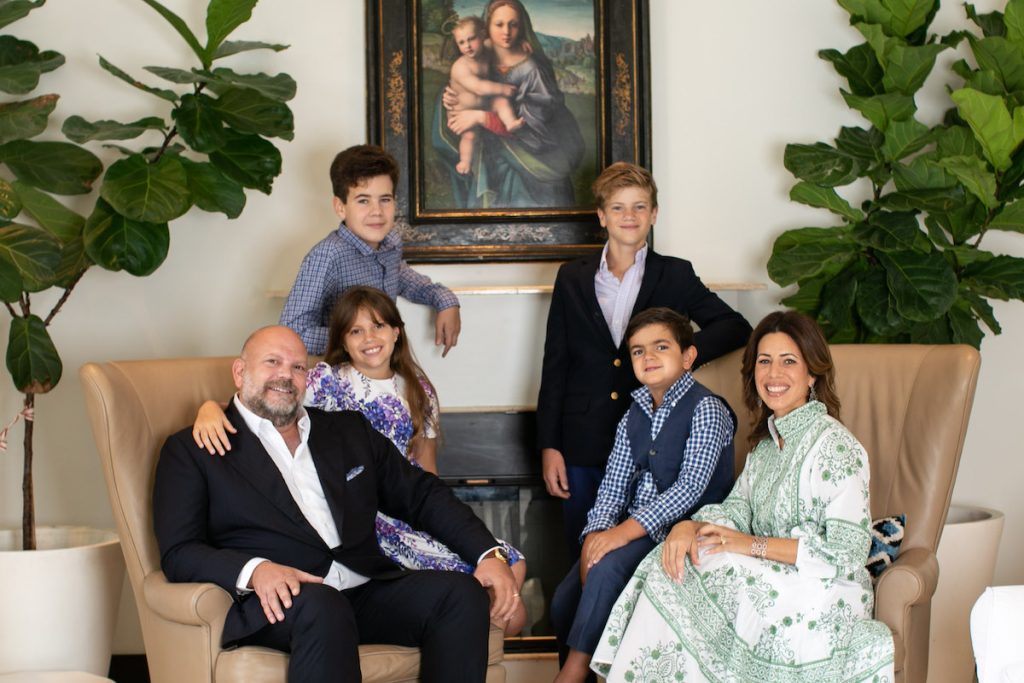
Daisy: It was absolutely a big difference. It was, at first, very hard because we wanted everyone to be happy. I can almost pinpoint the moment when things began to change because it was very much tied to why we did this exhibit. When our oldest son went to Belen (Belen Jesuit Preparatory School in Miami), he felt at home. Things clicked and we liked what we saw when he started school.
What went on with the pandemic was very hard for the children and they didn’t understand what was going on. We have wonderful schools in Florence as well, but for us in our situation, it was really the education and seeing the children happy here fundamentally. They really they really enjoy the education here.
(7:50) Federico, now that you’re on your way to becoming an American citizen, how do you define “expat”?
Since I was a kid I always loved the United States for the freedom.
And you did live in the U.S. for some time?
Yes, when I was a little bit older. I worked in Dallas when I was 21. So I was raised in Italy but am an America lover. I loved watching “Rambo” and movies from the 90s. I’ve always loved the United States. And my family also love America.
I was studying law at the University of Florence and because I liked traveling a lot, I often went to Sweden. My cousin and some of my family live in Stockholm. To pay my expenses and especially the travel expenses, I bought things in auctions and sold them at the flea markets in Italy on Saturday and Sundays.
It was going quite well. At one of these flea markets, I met an American guy that moved to Florence with his wife and two kids. He bought a beautiful house outside of Florence in Fiesole. He loved antiques and asked me if I would like to move to Dallas and open an antique emporium. So, at 21 years old, I moved from Florence to Dallas for a couple of years. It was then that I understood that I wanted to focus on art history. So, I moved back to Florence and returned to university.
(9:53) Daisy, you were once the “expat” or foreigner in Italy. What did that mean to you and are you an Italian citizen?
Oh, I loved it. It was fun. I am an Italian citizen, very proud to have dual citizenship.
I had a retail store for over 10 years in the center of Florence. I’m still a distributor in part for an American brand in Italy.
It was a wonderful experience to meet expats in Florence . There’s an abundance of expats, dinners, and activities. We would do our own, like Trick-or-Treats for the kids or Thanksgiving. There was always a connection to the States. It was definitely fun and great.
I imagine that it’s very important to preserve your Italian heritage and the language. What else is really important that you want your children to hold on to, even though now they’re being raised in the United States and going to school here?
They definitely eat like Italians! You’ll never see kids here eat things like octopus. They’re like real foodies, all four. Federico and I always talk to them in Italian.
It’s also important, when we go back, to take them everywhere. So, they can rediscover and see new places. We were just recently at the Vatican and in Venice. Now it’s more fun because we’re like tourists in our own country.
They never understood why Florence was packed with tourists before. They would ask why are all these people here? When we lived there we couldn’t get through the streets when trying to drive to school. There would be all these people looking up at buildings and not at us driving. So now when we take them to Florence, they get it.
Escaping the crowds.
Definitely, there was really a lot of people. You can go to other places like the countryside. You just need to know where to go. Since we are South Floridians we don’t go to the beaches in Italy that are packed. We just went to the Dolomites.
(13:17) I think it’s really important that we talk about this exhibition. Give us some history about Frascione Arte.
Federico: I opened the gallery in 2008 in Florence. The same year we got married. Frascione Arte, though, is a family tradition that started in the 19th century by the father-in-law of my great grandfather. I am the fifth generation.
I think in the 19th century, they did not specialize in art, but were more like an antique dealer. My great grandfather was one of the first art dealers in Italy and the world who specialized only in art. He was selling art to American museums at the beginning of the 20th century.
Vittorio Frascione
It’s incredible. My grandfather was my mentor. What I am today is thanks to him.
I loved him and we were very close. His house was filled with all these paintings hung in the corridors. I loved going there.
I remember that painting over there [hung in the Belen Jesuit gallery]. To me, that’s a dream come true. I remember it exactly — running around master paintings. It was incredible!
I had a special relationship with my grandfather, a really special one. And that’s why my grandfather didn’t want me to do this business because it’s one that you do with patience. A lot of patience. It’s not a business that you can study, and that’s it. And so, he told me to go to law school and start there. But sometimes God puts you on the road, and then you see after all.
When I came back from Dallas my grandfather understood what I wanted to do, and he helped me. We started to work together. I was studying art history in the morning, and then stayed with him every afternoon and learned the secret of this business. So that’s how I started and then when he passed away. I finished my university, and then I decided to open the gallery in his name — Frascione was his last name. That’s why I called it Frascione. He had closed his gallery in the 80s.
(16:06) Tell us about the exhibition
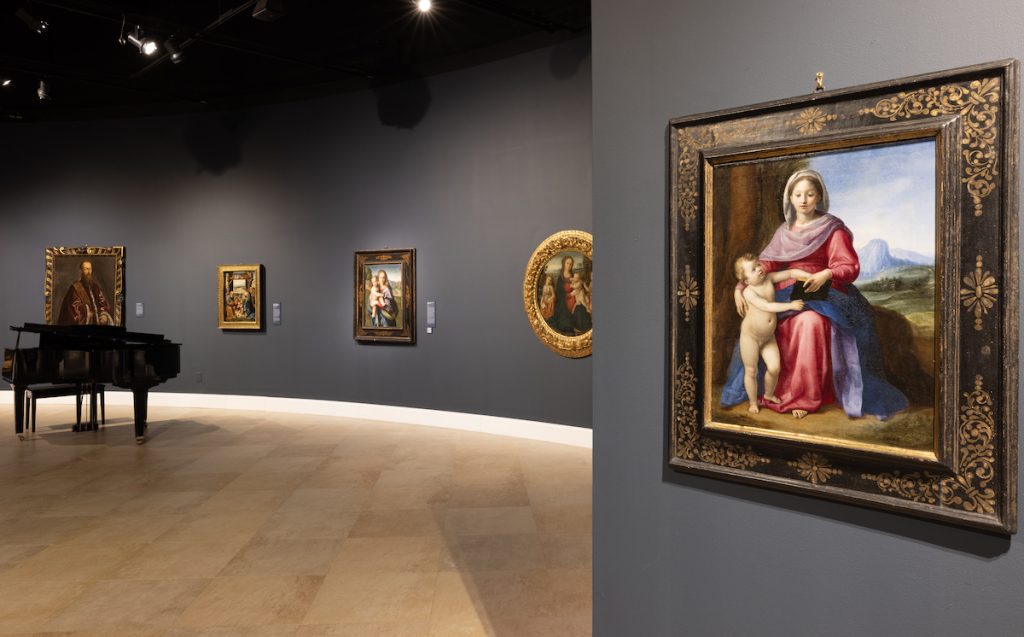
The idea came about ten months ago. We did it very fast because usually to build an exhibition like this, you take a couple of years. We were having dinner at Sapore di Mare with Daisy and Father Willie [Fr. Guillermo M. García-Tuñón, S.J., President of Belen Jesuit Preparatory Schooll.]
I was explaining to Father Willie who we are, how we moved, and what we were doing. Then I mentioned a Ruben’s painting that is exhibited now here in Belen’s gallery. When he saw the picture, he loved it, and said, “Why don’t you send it here to Miami and we can have an exhibition?”
So, I started the day after and called the office in Italy to find out which paintings could be shipped to the United States. There’s a lot of paperwork — a complicated process that people don’t understand. For that I needed paintings that already had the paperwork or ones that wouldn’t be difficult to get.
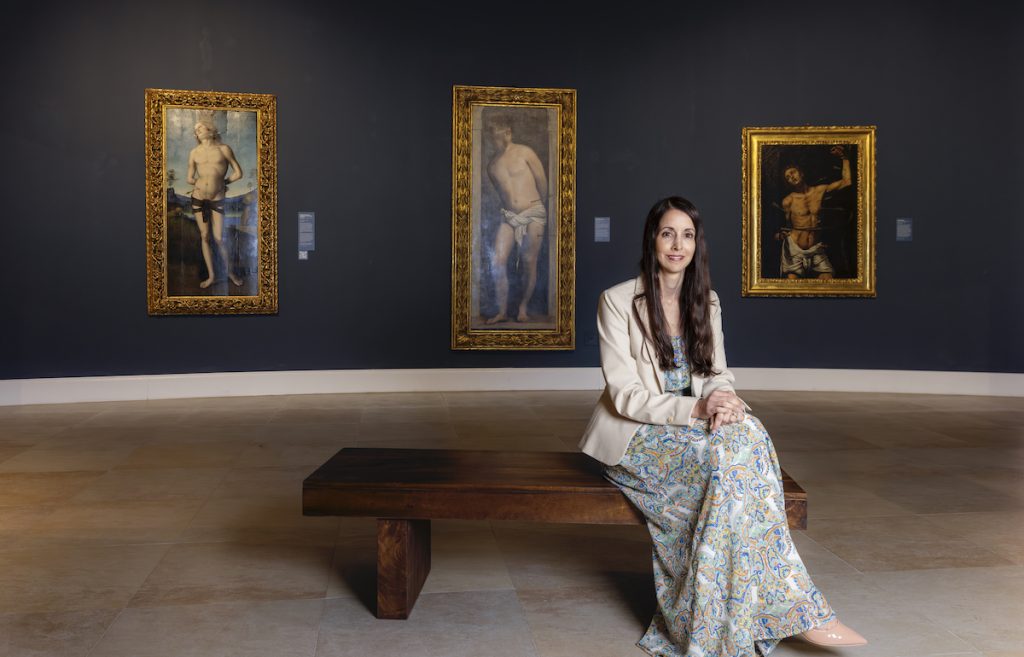
Ms. San Juan [the gallery director] had a special feeling and embraced this task. She loved it and is the one who actually really built it up at the very end. She, Daisy, and I decided together which paintings we wanted for this exhibition.
Since Belen is a school of faith, we wanted religious paintings, but there are also secular paintings. And since this is a school, we wanted a panorama of the history [of the 13th – 17h centuries.] I think it’s a great timeline.
(18:50) Daisy, as the cultural director, can you comment about the goal of the “Faith, Beauty, and Devotion” exhibition?
We wanted to educate. Our goal was to really share the history of it — the culture. The feedback that we received working with the school on creating events around the exhibit was of great interest.
We have the music aspect with an event with a soprano. We will have wine tasting, poetry readings, dinners, and more. It’s all organized in a similar way that we do things in Florence. We looked at our cultural events that we’ve hosted before and thought, “that they might not be ordinary in Miami, but we’ve done them before.” There’s nothing like having a good company, good friends, a good glass of wine, talking about the art, where it came from, and what we do.
It’s refreshing for us, especially the aspects from the student’s perspective. I know there will be even field trips to the exhibit. There’s a great interest from the middle and high schools, especially in the area. I think that it’ll be quite a treat for students who are learning this to get out of the classrooms. They’ll be seeing it instead of just talking and hearing a class lecture.
(21:19) Daisy, you were raised in Catholic school in Miami and it’s been very important for you to raise your children and in particular, two of your sons here at Belen. What went into that decision?
Yes, our faith is what grounds us. It’s the journey that Federico was explaining about how we got here. We had really only planned to be here for two weeks, but Federico and I would say to each other,
we have to have faith and this is what’s meant to be.
We had faith that there was a greater plan. So, it really guided us into all our decision making. We appreciate the Jesuit education here. It’s really, in a way, the Renaissance man that the school is creating. The students are exposed to a little bit of everything. They study theology and the sciences, but also have sports. They’re well rounded. And that’s very important in today’s world. I don’t want them to be just fixated on just being [for example] a scientist or an artist. It’s really nice to have that 360-degree education.
(23:00) Federico, we were talking about the historical timeline. Can you speak about three paintings that take us through the Medieval, Renaissance, and Baroque periods?
Out of the thirty paintings, every single painting has an history and one that is directly related to me. So, it’s like a relationship between me and the painting. And each one that has been selected is a masterpiece or is a good representation of the time.
Umbrian Master “Painted Cross”
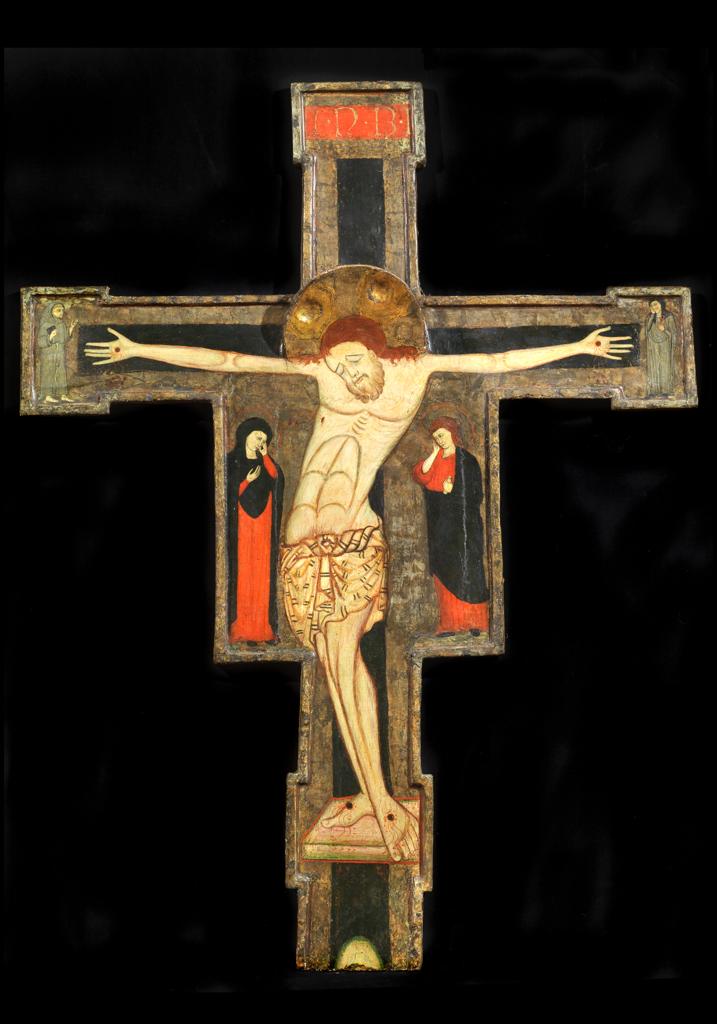
(23:46) But if I have to take three paintings to speak about, I will surely start with the cross [Medieval Cross]. I started with the cross because it’s the oldest piece from the 13th century. We are in Assisi and, as you know, Assisi, at that time, was the center of culture in the world.
St. Francis was canonized just a few years earlier and all of the most important artists were working on the Basilica San Francesco in Assisi. Giotto and Cimabue went there. We don’t know who painted the cross because at the time, it was difficult. There are no documents because at the time they were artisans and documentation did not exist.
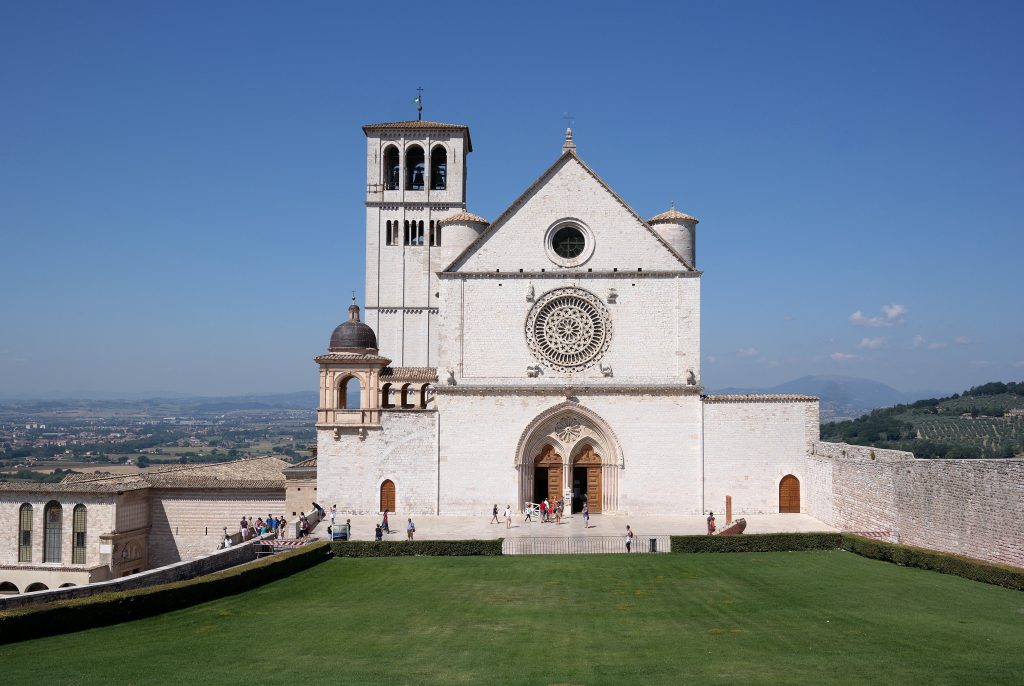
We do know that he was a Byzantine painter who was greatly influenced by medieval art. When he saw Giotto and the fabric of Assisi, he tried to change and modernize himself. We can see the Byzantine style mixed with what would have then be considered modern art of Giotto.
The painter was probably older than Giotto, and was probably a painter born around 1240 or ’50, so the result is anyway very Byzantine, so that’s a very good representation of the medieval side.
Gold Leaf Panels
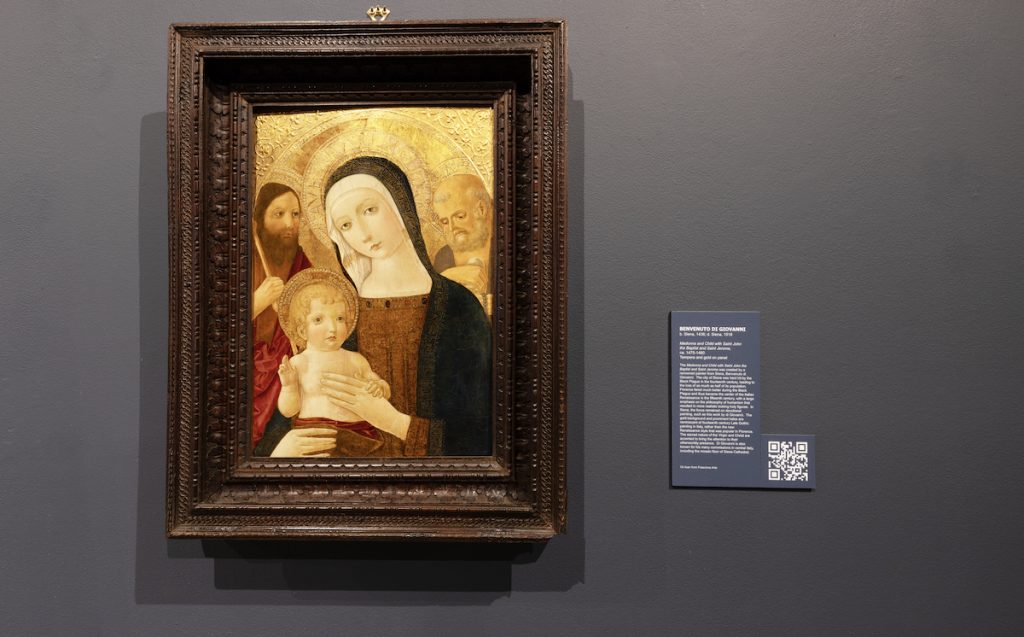
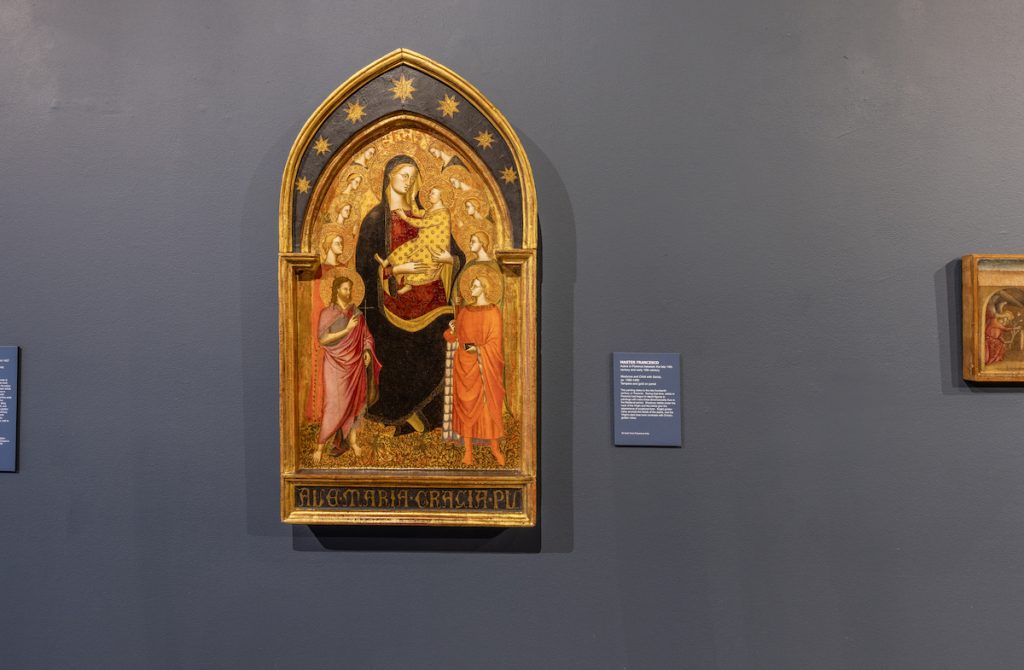
(25:44) Then we have a small representation of four or five pictures of what we call the gold leaf panels, or the gold back panel because of the golden backgrounds. They are a good representation of medieval art.
Jacopo Tintoretto: Portrait of Vicenzo Morosini

(26:00) Another very important one is the portrait by Tintoretto. Tintoretto was a Venetian master in a time that the Venetian Renaissance was coming up. Let’s not say against the Florentine one, but with a different point of view. And while in Florence, the idea of Renaissance was summarizing the drawing. They were paying a lot of attention to the drawing, the dimensions, and the perspective. In Venice, the attention was on the brush and the colors. So not the drawing.
Tintoretto was a master of that. We are very lucky to have this portrait because he is a very rare painter. The portrait of Morosini is an important full -size portrait. We know that in the National Gallery of London, there is another portrait by Tintoretto of Morozini. So, same painter and same subject, but different because the portrait in London is on a smaller scale – it is just a face and with a little window on his right.
Jacopo Tintoretto, Portrait of Vincenzo Morosini, ca. 1580, 118×99 cm
Peter Paul Rubens: Act of Devotion by Rudolf I of Habsburg
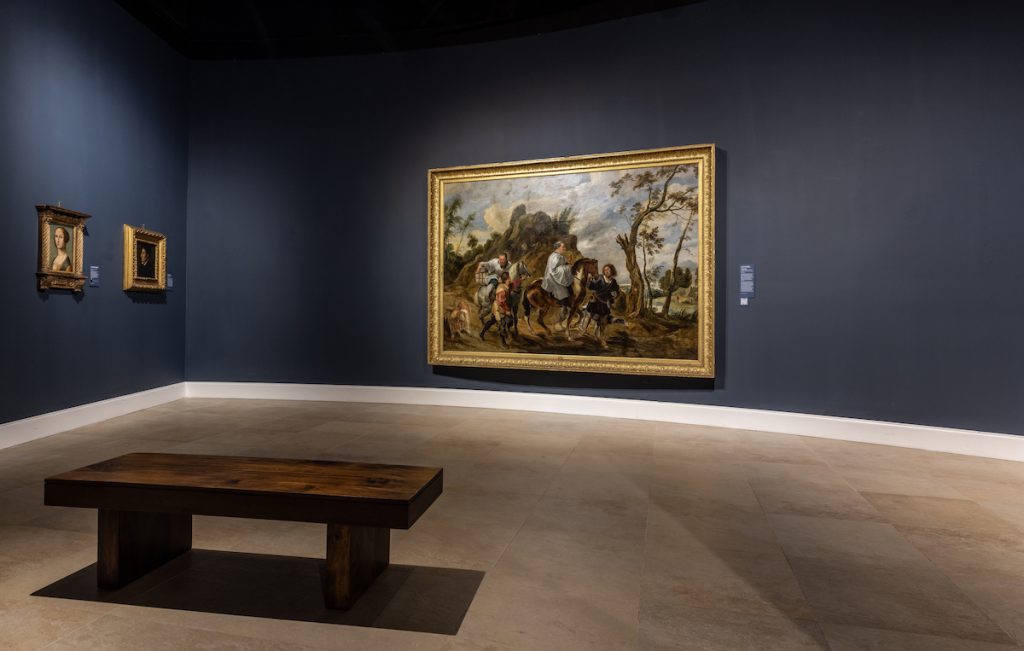
(27:00( I would say that another piece that, of course, is very important, and is maybe the star of this exhibition, is the Peter Paul Rubens. This painting had been commissioned to Rubens by the Marquise of Leganes. He was the cousin of the King of Spain. Rubens made it together with Jan Wildens, a painter who was working with him. Wildens painted the landscape and Rubens did the characters, or some parts of the characters.
Rubens was like a factory at the time. He had all the best painters of Northern Europe working for him. It was a really big factory and paintings were going out all the time. From the Marquise of Leganes , the painting then moved to England where it was acquired by the Spencer-Churchill Collection. An important family that is represented people like Diana Spencer [Lady Di] and Winston Churchill.
This painting is a very representative picture of what exhibition is because of the very interesting subject. Rubens was more than an artist. He was a diplomat and a politician — a smart man and a great artist. The painting depicts the devotion of Rudolf II of Augsburg. He was a peacekeeper and aimed to bring peace to Christians in Europe.
And so, you know, the message is still there.
Pieter Paul Rubens -‐ Jan Wildens attr., Act of Devotion by Rudolf I of Habsburg, ca. 1616, oil on canvas, 75.5×114.9″
(30:37) Many of these have been held in your family and part of other people’s private collections. Can you tell us about that?
Yes, there are a lot of stories and history. Like in the Rubens, there is a personal story because that painting was bought by my grandfather at Christie’s [auction] in 1965 when [a portion of] the Spencer-Churchill family estate was sold.
Since I was a kid, the painting had been hanging in the wall of his home. In 2012, I bought a projector screen to watch the World Cup football [soccer] game. So, all my friends gathered together and the painting was covered with this screen and on top the projector! The painting is very heavy, and I couldn’t move it, so I came up with this brilliant idea! It was a lot of fun.
All of the paintings have a lot of personal meanings and history. Imagine how many things these paintings have seen in 500 or 700 years like fires, war, and all kinds of things. Unbelievable!
Read more about the paintings and exhibition.
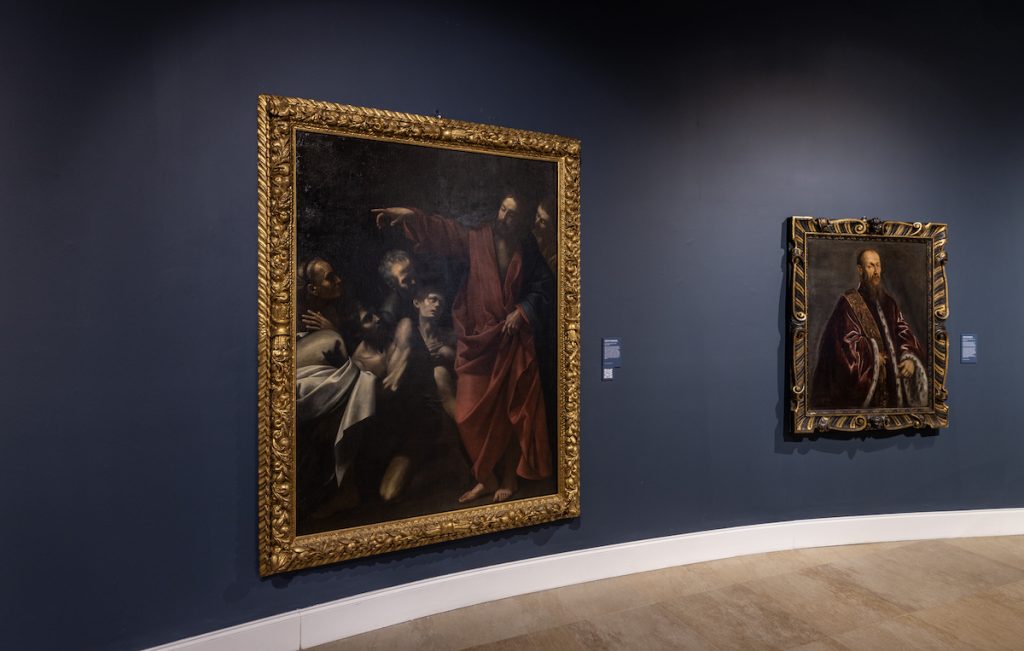
Visit “Faith, Beauty, and Devotion” on view now through Miami Art Week (Art Basel Miami) and closing December 16th.
Website: BelenJesuit.org/Exhibition
If in Florence, visit: Frascione Arte
All gallery images by Armando Colls for Live in Italy Magazine.
Video by Visual Popcorn

